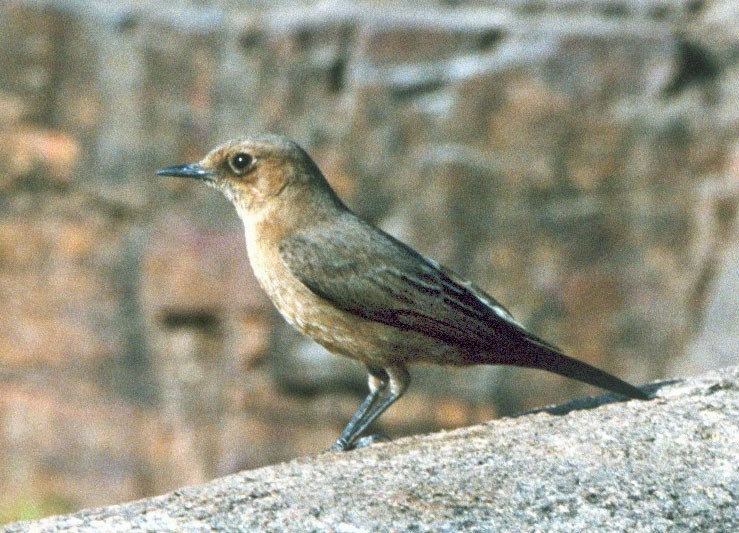Brown Rock Chat
A species of Wheatears Scientific name : Oenanthe fusca Genus : Wheatears
Brown Rock Chat, A species of Wheatears
Botanical name: Oenanthe fusca
Genus: Wheatears
Content
Description General Info
 Photo By Don Roberson
Photo By Don Roberson Description
The brown rock chat is larger than the somewhat similar looking Indian robin and is about 17 cm long. It is uniformly rufous brown with the wings and tail of a slightly darker shade. The brown on the undersides grades into a dark grey-brown vent. In flight it resembles a female blue rock thrush and is usually found singly or in pairs on old buildings or rocky areas. The sexes are indistinguishable in the field. When feeding on the ground it sometimes flicks open its wings and tail. It also has a habit of slowly raising its tail slightly, fanning it and bobbing its head. They feed mainly on insects, picked off the ground. They have been known to feed late and forage on insects attracted to artificial lighting. They have a wide repertoire of calls. Nearly eight different kinds of calls have been noted and these include territorial calls, begging call, feeding call, alarm call, threat call, contact call, distress call, roosting and emergence calls. The usual call is a short whistling chee delivered with a rapid bob and stretch and the alarm call is a harsh chek-check. The song is thrush like with a number of notes, often including imitations of the songs of other bird species including the yellow-eyed babbler, black-winged cuckooshrike and Tickell's blue flycatcher. 
Size
17 cm
Nest Placement
Ground
Feeding Habits
Brown Rock Chat's diet primarily consists of insects like ants and beetles, as well as spiders. Brown Rock Chat forages on the ground and uniquely feeds at night on insects drawn to sodium lamps.
Habitat
The habitat of brown Rock Chat typically encompasses low rocky hills and sandstone cliffs, alongside human-altered environments such as old forts, ruins, quarries, and urban areas including gardens and rooftops. Brown Rock Chat are often found in locations provided with ample food resources, as they may forage in nearby fields.
Dite type
Insectivorous
General Info
Feeding Habits
Bird food type
Distribution Area
The species is nearly endemic to India, distributed north of the Narmada, west to Gujarat (mainly Kutch but extending south) and east to Bengal bordered on the north by the Himalayas where it is found only until about 1300 m in the foothills. Its distribution extends into northern Pakistan where it is restricted east of the Chenab River. Although largely resident, some populations make movements in response to weather. In the foothills of the Himalayas it moves higher up in summer, appear in Dehra Dun in spring and leaving before the onset of winter. The species has been seen in Nepal. It is a common species although very patchily distributed. 

 Photo By Don Roberson
Photo By Don Roberson Scientific Classification
Phylum
Chordates Class
Birds Order
Perching birds Family
Old world flycatchers Genus
Wheatears Species
Brown Rock Chat